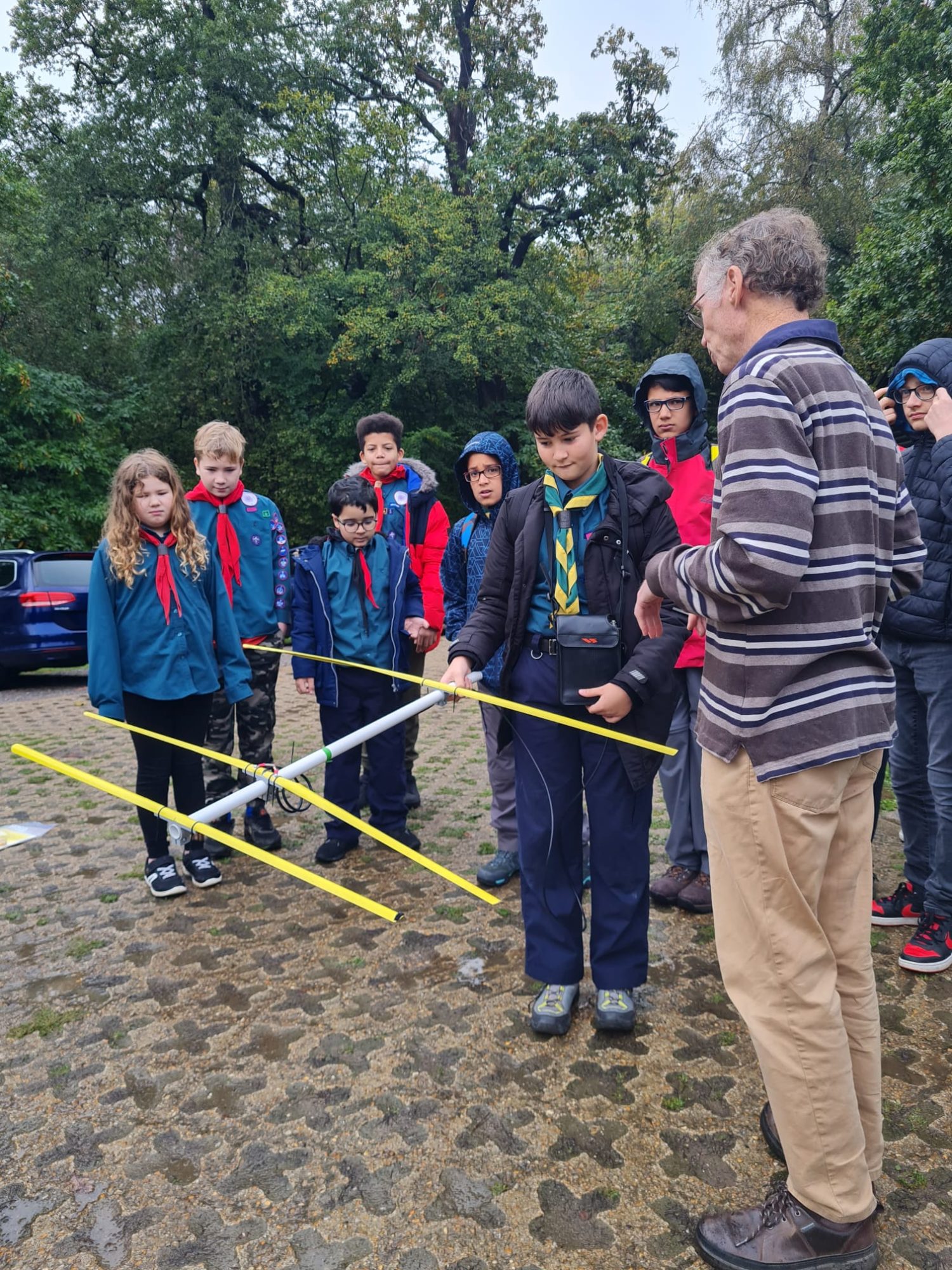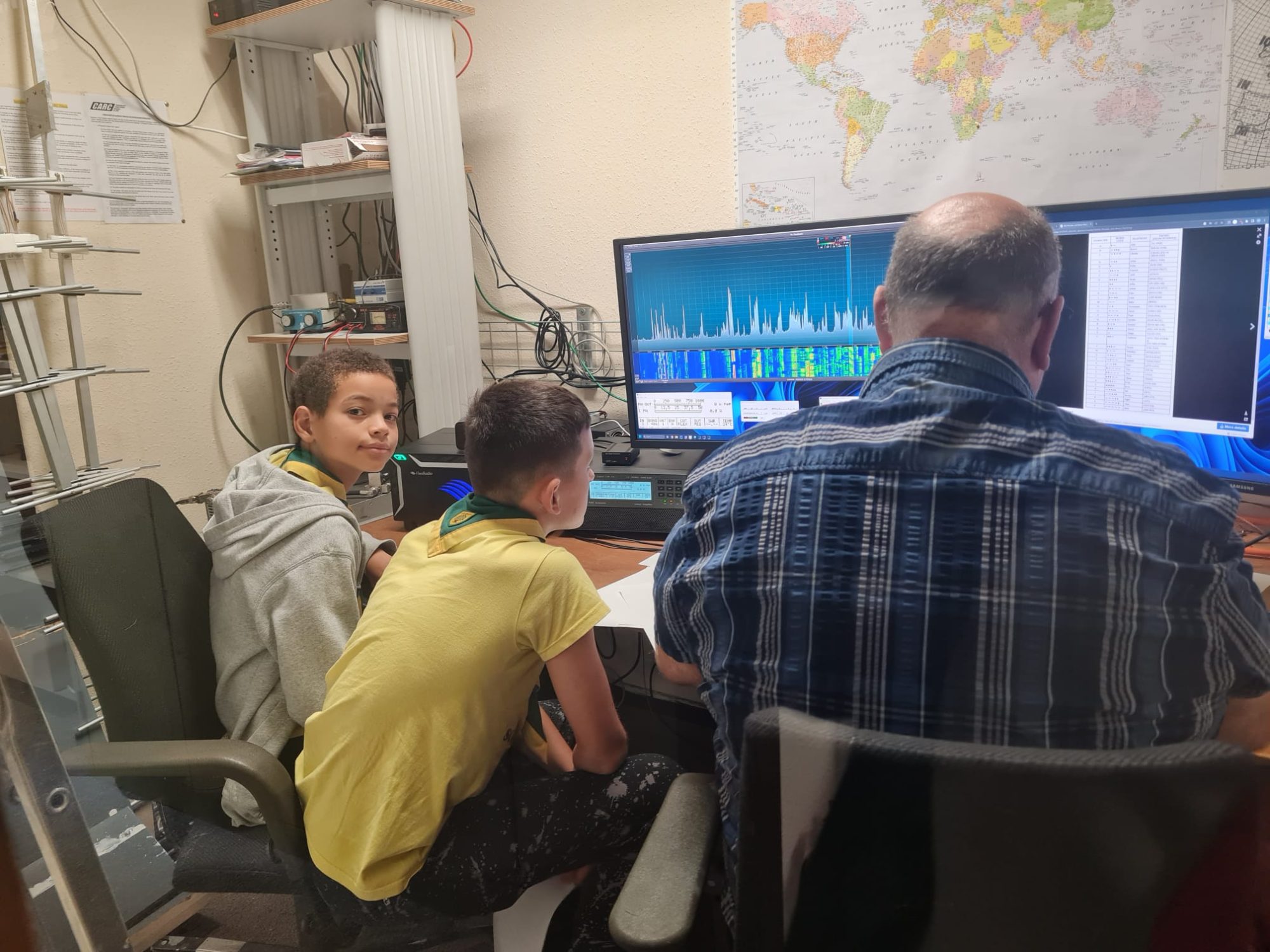The third weekend of October is when JOTA, the Jamboree On The Air, happens. It’s a chance for Scouts from around the world to make contact with each other using amateur radio. This year Crawley District were fortunate enough to get invited to the Crawley Amateur Radio Club (CARC) hq in Tilgate Forest. Scouts from 4th Worth, 1st Southgate and 7th Crawley spent several hours being taught how radio works (hint: nobody really knows), hunting for radio beacons other Scouts had hidden in the forest and, best of all, operating the rig to contact other Scouts.

Here’s Mike from CARC (spelt Mike India Kilo Echo) demonstrating, with the aid of two Scouts and a piece of rope, what waves and frequency are all about. Radio waves are electromagnetic radiation, like light, and like light travel in straight lines. To be able to receive over greater than line of sight distances, radio hams (how amateur radio operators refer to themselves) do all kinds of special stuff, bouncing signals off a layer at the edge of the atmosphere, called the ionosphere. It’s almost magical. Or as Arthur C Clarke said: “Any sufficiently advanced technology is indistinguishable from magic”

CARC member Dave explaining how to use the “tape measure Yagi” antenna he’d made the night before to locate the hidden radio beacons. The cut up bits of tape measure act to make the antenna directional, so that it’s more sensitive in one direction and when it was pointing at a beacon, the noise made by the receiver got louder. We soon learnt that it was easier to use the back of the antenna, listening for when it was at it’s quietest, or “nulls” as they call it in radio land.

Scouts from 4th Worth being assisted by Graham from CARC (he’s also a leader in East Grinstead District) trying to make contact with other radio hams. Propagation of radio waves, especially bouncing them off the ionosphere, is greatly affected by all kinds of things, including solar activity and unfortunately while Crawley Scouts were visiting, conditions weren’t great, so we couldn’t receive signals from very far away. In the end we contacted 17 separate stations, some of which were in the Netherlands and the rest in the UK. Some of these were Scout operated JOTA stations. We were operating on a variation licence, callsign GB2CSG that CARC had arranged and working the 40m waveband. Massive thanks to CARC for their hospitality, kindness and expertise. The day’s activities went towards section 1 of the Scout Communicator badge. If you want to learn more about amateur radio, why not gain your “Foundation Licence“? The nice people at CARC tell me it’s quite easy to get and is a great introduction. I might even have a go myself.


You must be logged in to post a comment.